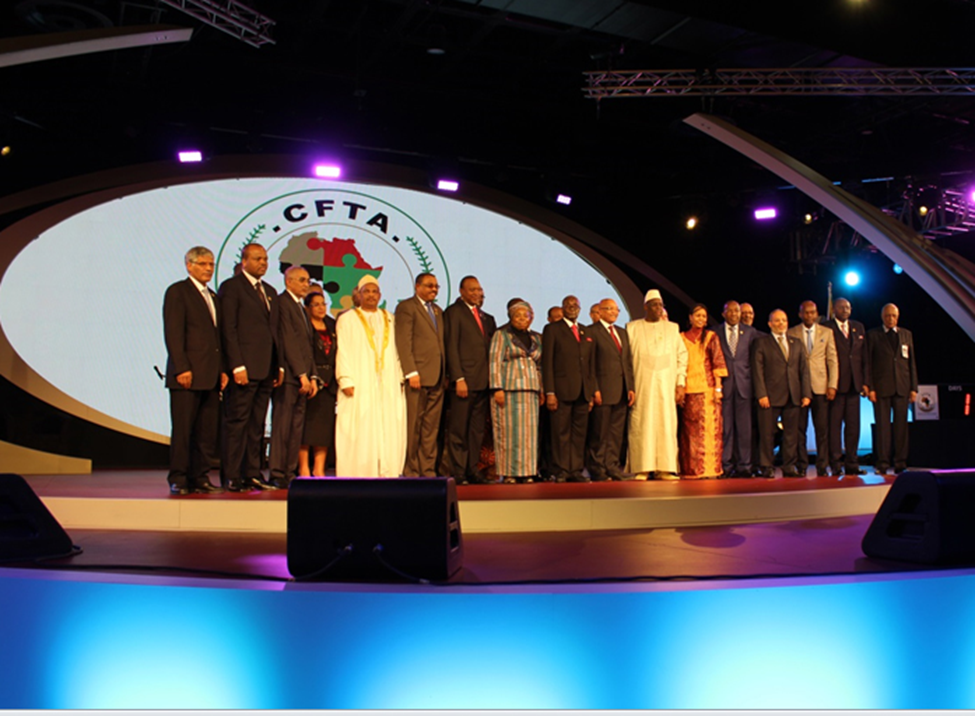The folly of the Africa’s Continental Free Trade Area (CFTA)
Toutes les versions de cet article : [English] [français]
SOL | 25 June 2017
The folly of the Africa’s Continental Free Trade Area (CFTA)
by Jacques Berthelot (jacques.berthelot4@wanadoo.fr)
The roadmap of the Continental Free Trade Area (CFTA) was adopted by the African Union (AU) in 2012 and the decision to launch the negotiations in June 2015 at the 25th AU Summit, with the aim of implementing it by the end of 2017. TRALAC has issued the many official documents related to the CFTA negotiations1 and, finally, the African Ministers of Trade have agreed on 16th June 2017 in Niamey to liberalize 90% of tariff lines with flexibility accorded in the remaining 10% for sensitive and excluded products2.
I – The totally unrealistic goals of the CFTA and CCU
The CFTA goal of the AU is an unrealistic folly, in its contents and timing, but supported by UNCTAD and the United Nations Economic Commission for Africa (UNECA). While the Regional Economic Communities (RECs)3 of sub-Saharan Africa (SSA) are very far from having implemented their legislation on the free movement of goods and people and their common external tariffs, enlarging immediately those objectives to the whole continent can only lead to disaster. Thus the Secretary-General of UNCTAD, Mukisha Kituyi, said on Sept. 29, 2016 at the WTO Public Forum, "I have been privileged to meet with 16 African presidents to discuss the CFTA and rejoice that many political leaders believe in the future and the need for African integration"4. For the two main UNECA experts having promoted the CFTA – Lily Sommer and David Luke – "Indicative CFTA agreement finalisation deadline of 2017 is ambitious... However, timely implementation of the CFTA is crucial, particularly in the context of MRTAs and shifts towards reciprocity"5.
Fascinated by the mega-regional trade agreements (MRTAs) like TTIP, TTP and CETA6, the AU flexes its muscles by claiming to do better among its 55 Member States7. Ms. Fatima Haram Acyl, AU Commissioner for Trade and Industry, stated at the opening of the First CFTA Negotiating Forum Meeting on 22 February 2016 : "The emergence of Mega Regional Trade Agreements continue to threaten Africa’s market access in established markets - severely diminishing the value of preferences such as AGOA and EBAs, and it appears that this trend will continue to accelerate. What does this mean ? It means that Africa’s destiny is once again in its own hands. While we may not be able to control what happens at the WTO or in the MRTAs, what we make of the CFTA is entirely in our hands"8. This is illusory and contrary to the lessons of history which shows that all the developed countries of today have reached their competitive position through a high import protection on agriculture and infant industries and, on top of that, they have benefited (and are still benefiting) from huge subsidies, not to speak of the exploitation of their Southern colonial countries, particularly in Africa, for centuries. As Mamadou Cissokho stated in the WTO Public Forum in September 2014 : "All countries which have developed begun by creating the conditions to do it through import protection and it is only afterwards that they have open their markets to other countries. One cannot ask today to Africa to be the first example showing that it is by first opening its markets that it will develop".






